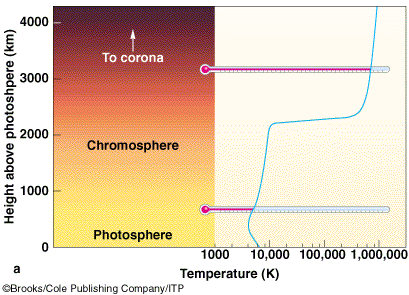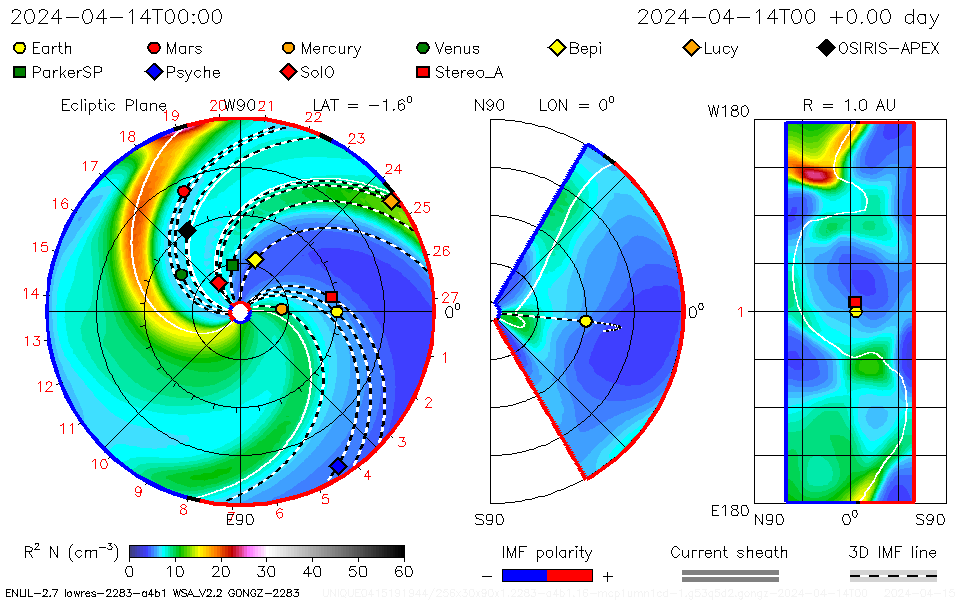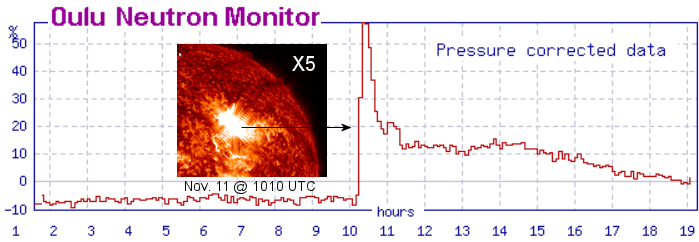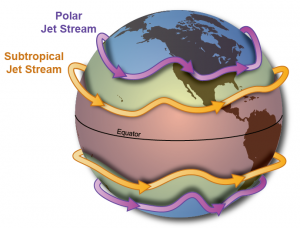|
The omniverse is matter and antimatter universes of solar systems and galaxies which capture electrons from deep space, electrified by jets from wormholes to opposite polarity universes, and transform photons into protons, composed of electrons and positrons, 2d and 3d photon quanta, with opposite and like polarity to solar and planetary fields and electrons in one polarity universe have the same polarity as positrons in the other. The solar wind is protons which cycle positron trios through singularity with 2 electrons Solar currents charge the corona and electrify solar field lines which form coronal loops grounded on the solar core and trap electrons which induce like charge in the same instant and like charges induced in the same instant are electrically repelled powering, extention of coronal loops above the corona and CME’s by explosively extending field lines grounded on the solar core and draping the CME leading edge.
When a CME intersects the planetary field electrified field lines drape and open circuits with planetary field lines, grounded in the atmosphere inside the auroral ovals, inducing a voltage potential powering high amperage sheet currents of CME electrons inducing auroras and electrifing sectors of the ovals facing the night sky during storms.
The repelling force between electrons charging sectors of the auroral ovals after geomagnetic storms powers expansion of the electrified polar air mass which deflects the mid latitude air mass away from the pole which increases barometric pressure, wind speed, blizzards, flash flooding, tornadoes and wildfires along the interface. Nov. 9, 2025 – EARTH-DIRECTED X-FLARE AND CME: Active sunspot 4274 exploded again today producing an X1.8-class solar flare and a full halo CME. During the flare, shortwave radios in the Indian Ocean briefly stopped working due to atmospheric ionization. Nov 11, 2025 – A ‘GROUND LEVEL EVENT’ IS UNDERWAY: Today’s X5-class solar flare from sunspot 4274 hurled a fusillade of energetic protons toward Earth. Some of the particles are so powerful, they are penetrating the atmosphere all the way to the ground. “This is a very significant event,” says Professor Clive Dyer of the Surrey Space Centre. “Neutron monitors around the world are detecting it.” Nov 11, 2025 – DOUBLE CME STRIKE PRODUCES SEVERE STORM: Arriving earlier than expected, two CMEs struck Earth. The closely-spaced sequence of impacts produced a severe (G4) geomagnetic storm. Auroras spread across almost every US state with sightings as far south as Florida, California, Texas, Arizona and Alabama. Nov 12, 2025 – THE THIRD CME HAS ARRIVED: The anticipated 3rd CME has arrived. It struck Earth’s magnetic field at approximately 1915 UTC. “These are possibly the brightest auroras I’ve ever seen,” reports Benjamin Root.
This is called a Ground Level Event (GLE). GLEs of this magnitude are rare; they happen only once or twice every solar cycle. “This one is comparable to the GLE of Dec. 13, 2006,” says Dyer. That makes it a ~20-year event. Nov. 23, 2025 – FIRST ERUPTION OF HAYLI GUBBI IN 12,000 YEARS A volcano in northern Ethiopia erupted Sunday, marking its first known eruption in 12,000 years. The volcano, called Hayli Gubbi, spewed ash up to nine miles into the air for several days, leading to flight cancellations and spreading a layer of dust across nearby communities. The planetary field captures dipole moments induced by the ionized rotating core which increases the momentum of orbiting ions in the direction of core rotation and powers west to east movement of weather systems, trade winds and jet streams, ionized by sunlight. SolarCycle 24: 2013 x 2014 x 2015 x 2016 x 2017 The planetary field transforms photons induced by mantle heating into protons which transform in exothermic reaction with electrons captured from the solar wind into mantle elements which increases planetary mass and surface area, as magma upwells and forms new lithosphere between the spreading oceanic plates. Before formation of the oceans the lithosphere draped the planetary surface in an unbroken rocky shell, equal to the surface area of the continental land-masses with mass, surface area, surface gravity, surface curvature, rotation period and axial tilt similar to the planet Mars, suggesting when Mars and Earth were similar in size, the planets were in geosynchroneous orbits.
|
Atoms are electrons and positrons 2d & 3d photon quanta with opposite and like polarity to the fields of stars and planets








